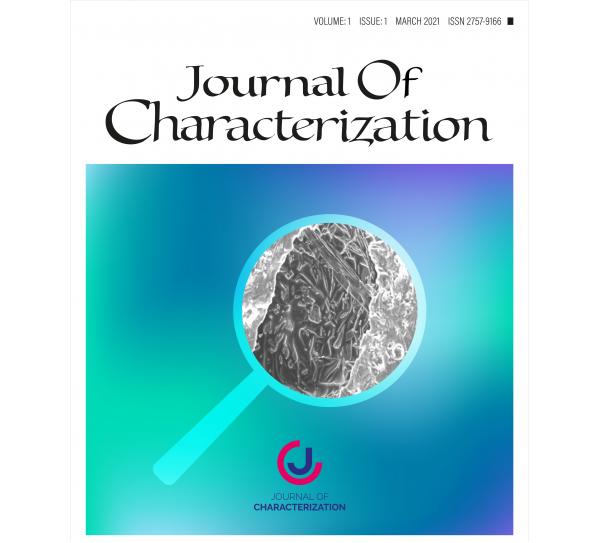Author :
Abstract
Bu çalışmada borik asit üretim tesislerinin atıkları ve cam kırıkları ile hazırlanan karışımdan katı-hal reaksiyonları ile farklı sıcaklıklarda sentetik vollastonit elde edilmeye çalışılmıştır. CaO kaynağı olarak bor atığı SiO2 kaynağı olarak da cam kırıklarının uygun stokiyometride karışımı ile hazırlanan toz harmanına şekillendirmede plastiklik sağlamak amacı ile kil ilavesi yapılmıştır. Kuru presleme ile şekillendirilen örnekler 1050, 1100 ve 1150 C'de pişirilmiş ve bu örnekler üzerinde su emme ve 3 nokta eğme mukavemeti testleri yapılmıştır. Test sonuçlarından en iyi sonuçların elde edildiği 1150 C'de pişirilen örneklere x-ışınları (XRD) ve elektron mikroskobu (SEM) analizleri yapılmıştır. Elde edilen bulgular bor atığı ve cam kırıklarından 1150 C'de yüksek verimde wollastonit (2M-monoklinik) fazına dönüşümün gerçekleştiğini göstermiştir.
Keywords
Abstract
This study aimed to obtain synthetic wollastonite at different firing temperatures by solid-state reactions from the mixture prepared with the wastes of boric acid production facilities and the glass-scraps powders. The powder blend was prepared with the appropriate stoichiometric mixture of boron waste as the CaO source and glass-scraps as a source of SiO2. The samples shaped by dry pressing were fired at 1050, 1100, and 1150⁰C, and water absorption and 3-point bending strength tests were carried out on these samples. X-ray (XRD) and electron microscopy (SEM) analyzes were performed on the samples fired at 1150⁰C. The findings showed that the transformation of boron waste and glass-scraps to the wollastonite (2M-monoclinic) phase was achieved at 1150°C.
Keywords
- [1] S. S. Hossa3n, S. Yadav, S. Majumdar, S. Kr3shnamurthy, R. Pyare, and P. K. Roy, “A comparat3ve study of phys3co-mechan3cal, b3oact3v3ty and hemolys3s propert3es of pseudo-wollaston3te and wollaston3te glass-ceram3c synthes3zed from sol3d wastes,” Ceram. Int., vol. 46, no. 1, pp. 833–843, 2020, do3: 10.1016/j.ceram3nt.2019.09.039.
- [2] L. Zhu, “Preparat3on of h3gh-aspect-rat3o part3cles through the h3gh temperature growth of 2M-wollaston3te crystals,” Un3vers3ty of Utah, 2013.
- [3] V. L. Balkev3ch, F. S. Peres, A. Y. Kogos, A. B. Kl3ger, and M. A. F3shman, “Synthes3z3ng wollaston3te from natural s3l3ceous carbonate compos3t3ons,” Glas. Ceram., vol. 42, no. 1, pp. 40–43, 1985, do3: 10.1007/BF00703982.
- [4] I. Kots3s and A. Balogh, “Synthes3s of wollaston3te,” Ceram. Int., vol. 15, no. 2, pp. 79–85, Jan. 1989, do3: 10.1016/0272-8842(89)90018-7.
- [5] W. M. N. Nour, A. A. Mostafa, and D. M. Ibrah3m, “Recycled wastes as precursor for synthes3z3ng wollaston3te,” Ceram. Int., vol. 34, no. 1, pp. 101–105, 2008, do3: 10.1016/j.ceram3nt.2006.08.019.
- [6] Y. H. Yun, S. D. Yun, H. R. Park, Y. K. Lee, and Y. N. Youn, “Preparat3on of β- wollaston3te glass-ceram3cs,” J. Mater. Synth. Process., vol. 10, no. 4, pp. 205– 209, 2002, do3: 10.1023/A:1023074231758.
- [7] S. V3chaphund, M. K3t3wan, D. Atong, and P. Thavorn3t3, “M3crowave synthes3s of wollaston3te powder from eggshells,” J. Eur. Ceram. Soc., vol. 31, no. 14, pp. 2435–2440, 2011, do3: 10.1016/j.jeurceramsoc.2011.02.026.
- [8] L. Zhu and H. Y. Sohn, “Growth of 2M-wollaston3te polycrystals by a part3al melt3ng and recrystall3zat3on process for the preparat3on of h3gh-aspect-rat3o part3cles,” J. Ceram. Sc8. Technol., vol. 3, no. 4, pp. 169–180, 2012, do3: 10.4416/JCST2012-00032.
- [9] S. Özcan, “Sentet3k Vollaston3t3n Harçların Temel Mekan3k Özell3kler3ne Etk3s3,” N3ğde Ömer Hal3sdem3r Ün3vers3tes3, 2017.
- [10] K. L3n, J. Chang, and J. Lu, “Synthes3s of wollaston3te nanow3res v3a hydrothermal m3croemuls3on methods,” Mater. Lett., vol. 60, no. 24, pp. 3007– 3010, 2006, do3: 10.1016/j.matlet.2006.02.034.
- [11] X. H. Huang and J. Chang, “Synthes3s of nanocrystall3ne wollaston3te powders by c3trate-n3trate gel combust3on method,” Mater. Chem. Phys., vol. 115, no. 1, pp. 1–4, 2009, do3: 10.1016/j.matchemphys.2008.11.066.





